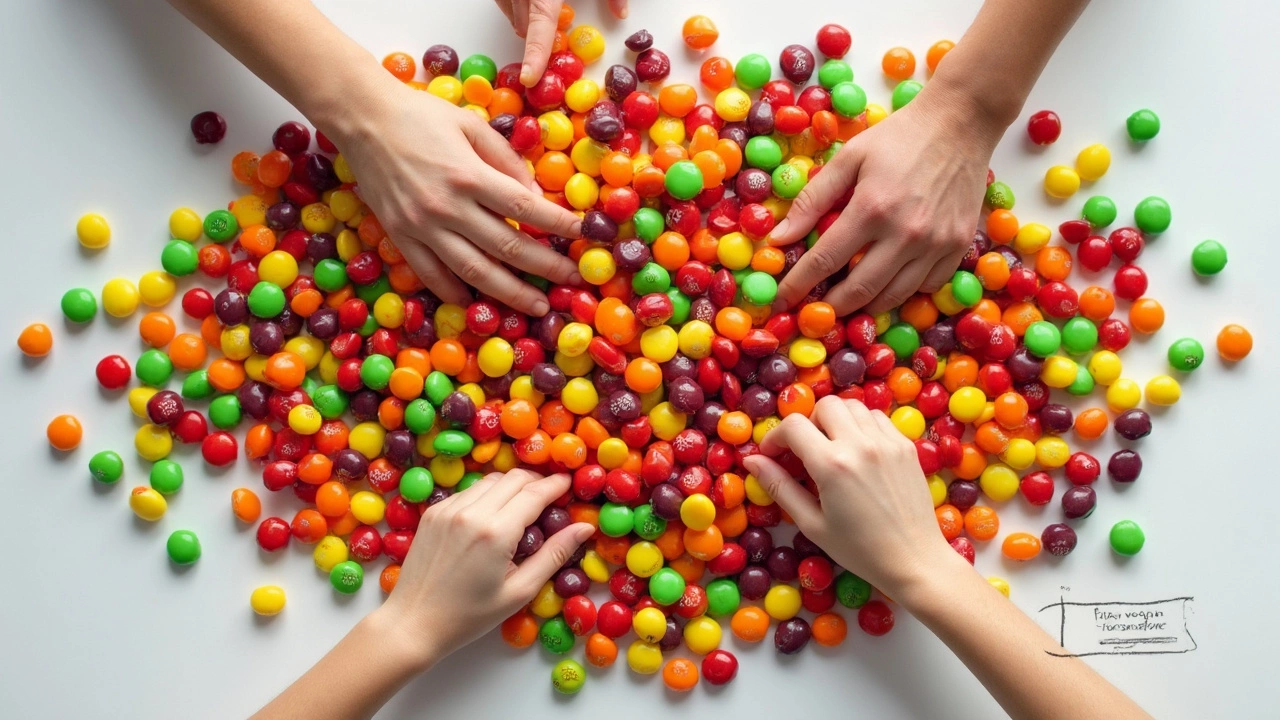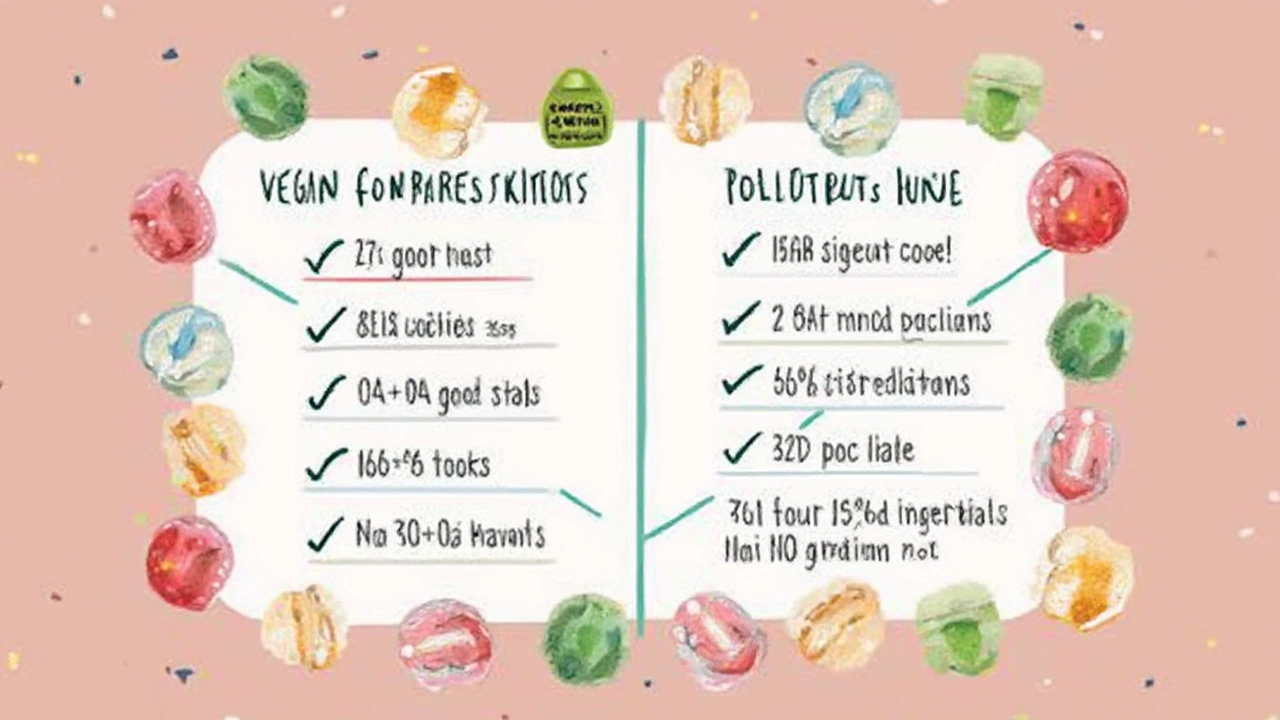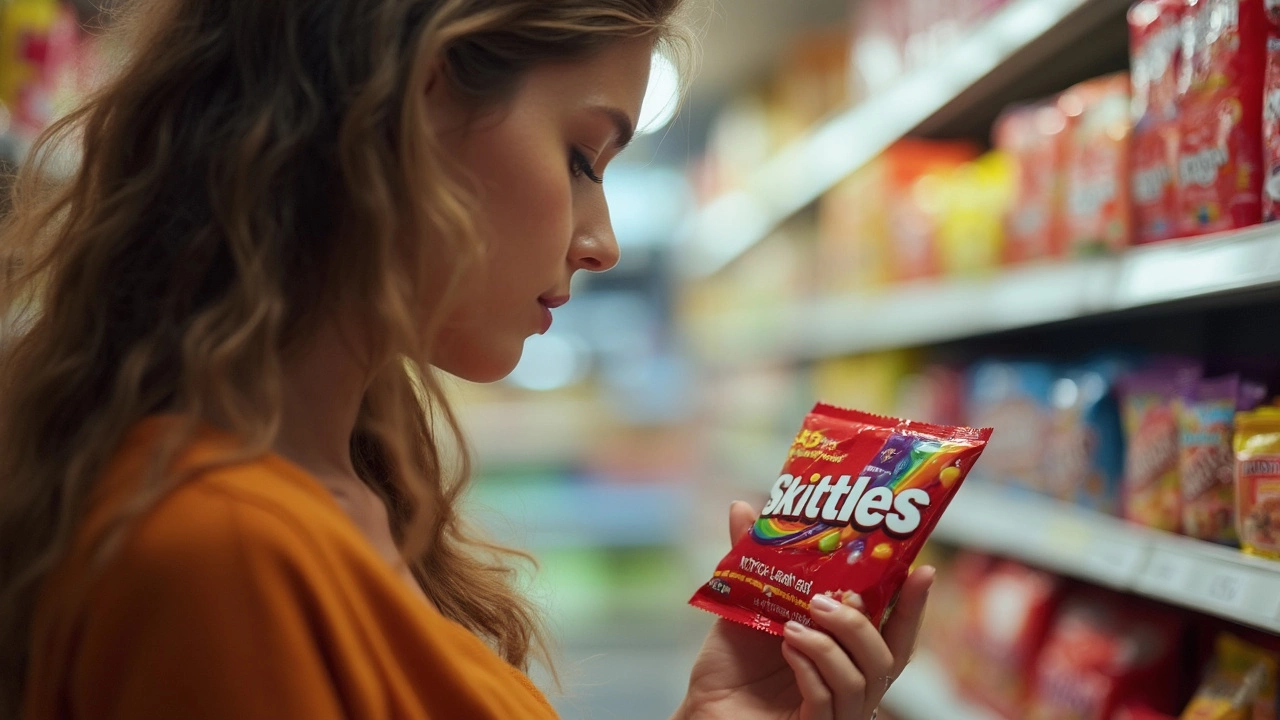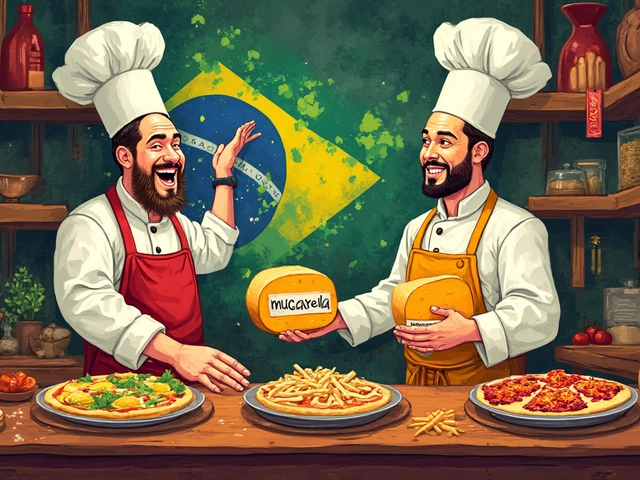
Few candies light up a movie theater or birthday party bowl like Skittles. Bursting with color and that signature sweet-tangy punch, these round bites have built a huge fan base – and among those fans, a growing group is asking: are Skittles vegan? The answer isn’t as simple as yes or no, especially if you’re using PETA’s standards (which tend to be pretty strict). A glance at the ingredient label might leave you confused and second-guessing your snack choice. Let’s pull back the wrapper and get to the truth about Skittles, breaking down what vegan and animal-friendly really mean when it comes to candy.
What Does ‘Vegan’ Really Mean When It Comes to Candy?
If only every food label could shout "vegan!" or "not vegan!" right on the front. But with processed treats, it’s never black and white. For something to be considered vegan, it can’t contain ingredients made from animals (like dairy, honey, or gelatin) or animal-derived additives (even tiny amounts). And here’s where things get tricky: some ingredients sound perfectly plant-based but sneak in stuff most people never think about – like certain food colorings.
PETA, the animal rights organization most people think of when they hear "vegan list," draws a hard line. According to PETA, a vegan item isn’t just free from obvious animal products. It also steers clear of additives made by crushing bugs (like cochineal) or processed using bone char (common with some sugars). So even if a label says “no animal products,” there might be details hidden in the supply chain that rule it out for the strictest vegans.
| Ingredient | Is It Vegan? | Common Source |
|---|---|---|
| Gelatin | No | Animal collagen (bones, hides) |
| Shellac | No | Lac bugs |
| Cochineal (Carmine) | No | Crushed insects |
| Sugar (bone char processed) | Sometimes | Charred animal bones |
| Palm Oil | Controversial | Palm trees (environmental/animal impact) |
So as you check a bag of Skittles, look for these sneaky ingredients. It’s not just about what’s in your hand—it’s about how those pieces ended up in the bag in the first place.
The History of Skittles Ingredients: What’s Changed?
Let’s rewind to the late 1970s. Skittles hit U.S. shelves in 1979 with an ingredient list that gave vegans nightmares: gelatin. Gelatin – yes, the stuff that makes Jell-O wiggle – is made from animal bones and skin. That was a red flag for anyone avoiding animal products. But the candy world moves fast, and so does public demand. In 2009, Skittles quietly dropped gelatin from its U.S. production recipe. Now, the American ingredients list doesn’t mention gelatin or carmine anymore. Same goes for shellac, another animal-derived coating that used to give Skittles their glossy shine.
That’s a massive shift. Gelatin and shellac kept Skittles out of vegan snack stashes for decades. Once Mars Wrigley (the company behind Skittles) made the switch, it opened doors for plant-based eaters. But not every country jumped on board at the same time. If you visit Europe or South America, ingredient lists might still look different – sometimes shellac and colorings slip through the cracks.
The key lesson? Always check the ingredients, especially in unfamiliar places or specialty flavors. Skittles may be vegan-friendly in the U.S. today, but a bag from Spain might be a different story. Even in the U.S., new limited-edition flavors or collaborations might bring back the old animal-based colorings or shine. Kind of like a fashion brand swapping faux fur for the real thing in a new winter line. So, that candy haul from the airport? Check before you pop open a pack.
This switch to vegan-friendly ingredients isn’t unique to Skittles. Big brands are feeling the pull from plant-based shoppers. In 2020, Nielsen reported that sales of plant-based foods rose by 27% in the previous year, compared to just 15% for total food sales. When enough people demand “vegan,” companies listen. Mars Wrigley’s reforms are part of that trend, but Skittles’ global story shows that progress isn’t always synchronized around the world.
Curious about other candy brands that made the vegan leap? Starburst candies, another Mars Wrigley favorite, dropped gelatin in some regions but not everywhere. So, every time you travel, think of yourself as a snack detective—ask questions before grabbing another handful.

What Does PETA Say About Skittles?
Are Skittles vegan according to PETA? Short answer: usually, yes, in the U.S. and U.K. But PETA likes to play it safe. The organization updates its “Accidentally Vegan” list often, and as of early 2023, Skittles sits pretty high up for reliable vegan candy. PETA breaks down candies into three buckets: vegan, “kind of vegan, but with concerns,” and “not vegan.” Skittles land in the vegan or mostly vegan camp according to current U.S. ingredients. That’s only if you’re not counting a few “gray area” additions.
Now here’s the thing that trips up purists: even if an ingredient isn’t made from animals, the way it’s processed or sourced can still harm animals. Typical granulated white sugar, for example, is sometimes filtered using bone char. PETA recognizes this, suggesting that candy brands can’t always guarantee their sugar is 100% bone-char-free unless they specifically use certified organic sugar (which legally can’t use bone char).
PETA’s biggest beef with Skittles, outside of sugar, is the use of artificial colors. Colors like Red 40, Yellow 5, and Blue 1 are made in labs—not from bugs or beetles. But these dyes have almost always been tested on animals by third-party labs. PETA doesn’t love that, but they admit it makes it hard to avoid most mainstream American candies. If you’re going for 100% ethical veganism, even animal testing in the supply chain is a sticking point. So, PETA members will say Skittles are vegan-ish, with a few caveats for the ultra-picky.
Confused yet? You’re not alone. If you want to use PETA’s logic, here are the main questions to ask:
- Is there gelatin, carmine, shellac, or other obvious animal-derived ingredients?
- Is the sugar organic, or can the company confirm it’s not filtered with bone char?
- Are you okay with artificial colors that have been animal-tested at some point in history?
For most people, the first question matters most. So if you’re content with staying away from clear animal products, Skittles should be a safe bet in the U.S. according to PETA’s relaxed vegan list—but keep your eyes peeled for those supply-chain updates.
Reading Between the Lines: Ingredient Watch and Hidden Surprises
Every vegan learns quickly—if a food comes in a package, never trust the wrapper! That green or yellow lettering might shout “fruity!” but it won’t say a word about animal friendliness. Skittles’ updated recipe is now vegan-friendly in the U.S., but limited edition and imported bags sometimes sneak back in old ingredients.
Here’s what to look out for every time you pick up a pack:
- Gelatin: If you see this, run for the hills. That’s straight-up animal product.
- Shellac: Another one to avoid—it comes from bugs and isn’t vegan by anyone’s account.
- Carmine (or cochineal extract): Sounds fancy, but it’s made from crushed beetles. Usually used in red, pink, or purple candies.
- Beeswax: Sometimes used as a glaze, mostly not in Skittles anymore, but common in other candies.
- Natural Flavorings: This one’s tricky—sometimes it means plant extracts, but it can also include milk or animal sources. In the U.S., Skittles’ flavors are considered vegan because Mars says nothing animal-based goes in.
One relentless myth is that Skittles’ colors come from bugs. That used to be true—carmine made up the red—but now Skittles use artificial dyes for every U.S. flavor. They’re made in a lab, not in a beetle factory. As for the sugar, the only way to be absolutely sure it’s not processed with bone char is if it’s organic, which regular Skittles aren’t.
The real dark horse: palm oil. It’s vegan by dictionary definition, but the environmental destruction it causes makes animal lovers squirm. Rainforest clearing for palm plantations destroys precious habitats. If this matters to you, it’s another ingredient to quiz the Mars Wrigley customer service team about. (Heads up: Skittles in the U.S. right now don’t use palm oil, but always double-check rare flavors or international bags.)
A last tip—sometimes vegan versions of Skittles show up from specialty online retailers. These might use organic sugar and colors derived from veggies or fruits. If you want zero doubt, these specialty candies are worth the splurge. You’ll pay more, but the peace of mind can be sweet—pun intended.

Vegan Candy Shopping: Tips, Hacks, and Alternatives
If you’re after plant-based sweets, here’s the best advice: always look twice. Skittles are good news for vegans—at least on routine grocery runs—but the world of candy is full of surprise ingredients. If you trust “accidentally vegan” lists and like staying up to date, bookmark the latest version from PETA and Vegan.com. Double-check ingredients with each new flavor or seasonal edition.
Here’s a quick tip-list for easier shopping:
- Keep a screenshot of PETA’s vegan candy chart on your phone.
- When trying new flavors, search for recent food allergy statements or FAQ updates from brands before you buy.
- If you’re out of luck at the store, order from online vegan retailers. They usually go above and beyond with ingredients and transparency.
- Read up on confectionery industry news—sometimes companies announce plans to reformulate, so you can catch wind of future changes before the labels do.
If you’re not into Skittles but want vegan-friendly treats, plenty of options are out there:
- Sour Patch Kids: No gelatin, no animal-based dyes in standard versions.
- Swedish Fish: Newer varieties use carnauba wax instead of beeswax.
- Twizzlers: The classic strawberry flavor is vegan in most regions.
- Dots: Short, sweet, and free from animal stuff.
If you’re crafty, consider making your own fruit candy at home. Use agar-agar or pectin instead of gelatin, and fruit juices or natural powders for color. Homemade gummies can be just as chewy and even more flavorful than anything in a bag.
Skittles have come a long way in their vegan journey. If you want a candy that isn’t just ‘not harmful to animals’ but also lines up with environmental and ethical ideals, there’s more to check off than just the ingredient list. But for most vegans in the U.S., Skittles are good to go. And who knows—maybe the next time you open a pack, you’re not just tasting the rainbow, but a bit of progress too.





